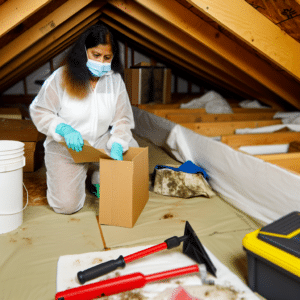
Each year, Gold Coast residents brace themselves for hurricane season. Along with the high damaging winds, this nerve-racking season brings the threat of flooding. When hurricane season ends, there is a collective sigh of relief. That’s because most folks believe that the dangers of floods are over. Unfortunately, that threat still lingers. Floods are not strictly relegated to hurricane season.
Floods can happen at any time of the year. That’s because there are many different types of floods. And each of these flood types have their own unique causes and effects. Knowing these flood types and understanding their potential impact can help you in the long run. You can make a plan so you protect your property, safeguard your household members and possibly diminish the impact of the flood.
Below, we’ll define each of these flood types and discuss the impact that can have on homes and commercial properties.
River Flood
River floods, also known as a fluvial flood, happens when the water levels in rivers, lakes, streams and creeks rise above normal levels. The water then overflows the banks and begins to flood the neighboring area. River floods, if strong enough, also have the potential to flood other smaller rivers and water bodies further downstream.
There are several causes of river flooding:
- Severe rainfall (caused by thunderstorms, tropical storms, or hurricanes)
- Combined rainfall (back-to-back storms or heavy rains for several days)
- Soil saturation (the ground around the surrounding body of water is drenched and unable to absorb the excessive rainwater fast enough)
- Snowmelt (as snow melts and turns to water it raises the water level)
- Ice Jams (large chunks of ice that block the normal flow of the river, lake, stream, or creek)
Although river floods can cause various degrees of property damage and threats to community safety, they can usually be predicted ahead of time. Agencies like the national weather service rely on such information as forecasted precipitation, previous precipitation records, current water levels, and soil/ground conditions to determine the probability of river flooding.
Being able to predict possible flooding allows residents and first responders to take the necessary measures to limit damage. These measures can range from using sandbags to reduce flooding to evacuating neighborhoods if the threat is severe.
Coastal Flood
Similar to river flooding, coastal flooding occurs in areas that are near the ocean. Instead of rising water levels, coastal flooding is caused by:
- High winds (storm winds lift the seawater and violently propel it on shore)
- Hurricanes
- Tsunamis
- Intense storms
The severity of coastal flooding’s impact depends on the tide. If the storm or winds occur during high tide, the flooding will be more intense and damaging. Low-lying coastal areas are more likely to be severely affected by the flooding which can lead to significant property damage and greater risk to community safety. Much like river flooding, weather agencies have access to models and information that can help assess the threat of a coastal flood. This allows communities and emergency services to take the necessary precautions to protect the residents.
Flash Flood
Unlike river floods and coastal floods, flash floods can happen in areas that are not located near a body of water. Also known as pluvial floods, flash floods occur when heavy rain falls in a very short amount of time. With nowhere to flow, this excessive water causes immediate and intense flooding.
Flash floods are prone to occur in the following locations and scenarios:
- Flat roads and surfaces where water can quickly pool
- Urban neighborhoods with less soil and more cement
- Overly saturated soil that cannot absorb the water
- Overflowing or clogged street gutters and drainage systems
- Rapidly water runoff from elevated surfaces
Flash floods are one of the most dangerous types. They move in fast and leave little time for residents to properly prepare. Because of this very reason, many emergency services urge residents in areas that are prone to flash flooding to monitor the weather forecasts. That way they can be aware of any flash flood watches/warnings and immediately evacuate if necessary.
Since floods are strong enough to knock down trees, cause mud and rockslides, move vehicles and cause property damage, drivers are urged to never attempt to drive through flash flood waters. Remember: Turn around – Don’t drown!
Household Flood
Floods are not strictly weather-related events. Many properties may experience flooding due to a variety of factors that are normally found in household and workplace environments.
Some of the most common causes of household flooding include:
- Burst or leaky pipes (rusty pipes leaking water, uninsulated pipes that freeze and burst in winter)
- Malfunctioning appliances (damaged hoses on dishwashers, overflowing washing machines, broken water lines on refrigerator ice makers)
- Clogged gutters or drains (when clogged with debris, leaves, and dirt, these areas back-up and flood basements)
While not as devastating as the flood types listed above, household floods can cause extensive water damage to a property. They can also be a health risk, as the water damage can result in harmful mold growth.
The good news is that, unlike weather-related flood types, many of these household flood risks are preventable. Pipes can be inspected for leaks while exposed pipes can be wrapped in insulation to prevent freezing and bursting. Residents can inspect their appliance hoses and water lines for signs of rot, rust, loose clamps, and leaks. And gutters and drains can be cleaned each season to prevent clogging.
If your property has been recently impacted by one of these flood types, then you need the help of an expert water damage restoration and mold remediation professional. Contact FloodCo USA today so we can rid your home or business from water damage and mold growth.



